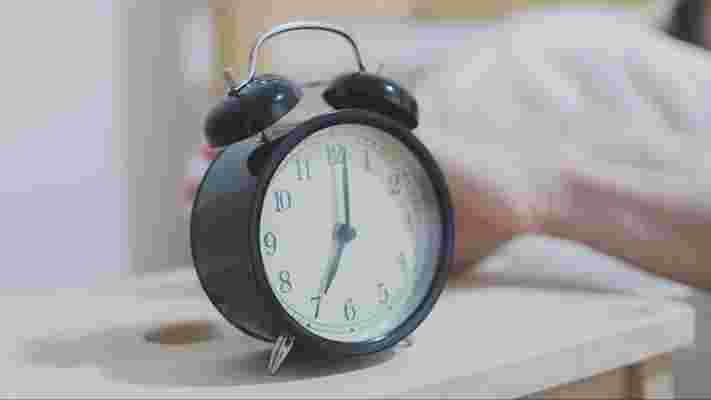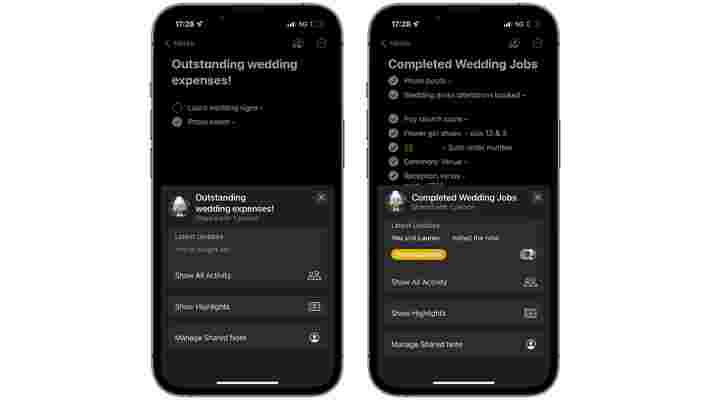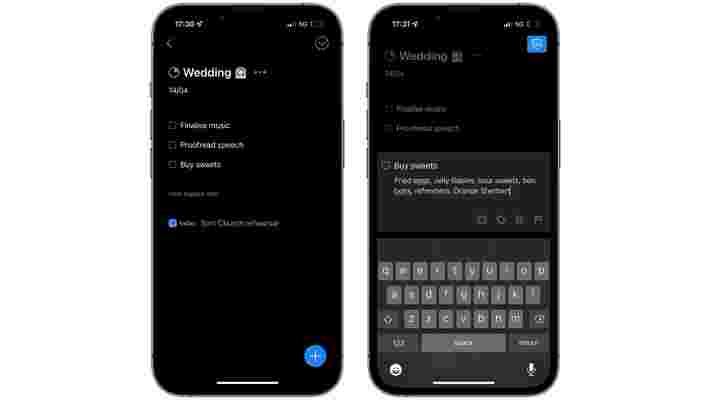Olympic athlete Greg Rutherford MBE knows a thing or two about how to sleep better, because if he doesn’t, his performance takes a hit. “Sleep is our superpower. Without the correct amount of sleep, performance goes down, and that’s a fact for everybody,” Rutherford tells TechRadar.
“It’s very rare to come across an athlete who is able to train well and perform well if they are sleeping badly. And it takes years for some athletes to figure out what works for them and to get the right combination; the right number of hours’ sleep and the right routine.”
In fact, having a relaxing bedtime routine is something Rutherford feels strongly about. “A bedtime routine is an essential part of my evening - I call it my ‘reverse warm up’ and it follows a similar structure to my kids’ routines.”
Gold medalist Rutherford, a track and field athlete who specialised in long jump, and who joined the Team GB bobsleigh setup in 2021, is sharing his pro insight to coincide with new research by bed retailer Dreams into the sleep and bedtime habits of UK adults.
According to the survey (of 2,000 people aged 16-60+ in January 2022), 27% of respondents have no night-time routine, while the average person gets just five hours’ sleep a night. For context, the NHS recommends healthy adults to get between six and nine hours a night.
Key findings from the new Dreams sleep study:

“When you get it right, sleep is such a wonderful thing,” Rutherford says. “It’s very easy to start stressing about sleep, but with the right routine you can alleviate that stress, which is why routines are important."
Here Rutherford chats to TechRadar about his sleep needs and personal bedtime routine, and what sleep advice he has for young athletes coming up through the ranks right now.
What is your overall best sleep tip for others?
“Stay away from tech before bed. Find a book instead, because you can lose yourself in a book without experiencing any other stresses. Social media can be a wonderful thing, but equally it can be difficult.
“All it takes is one message or one post and your brain is fired up again. At night all you want to be thinking about is sleep; you don’t want to be thinking about what someone is saying to you online.
“So something that I think is super important, especially for young athletes coming through now, is turning off your phone or putting it to one side and staying off social media for 45 minutes to an hour before bed. That’s a great way of switching off your mind.
“My other big sleep tip is pillow spray. I do it all the time for the kids but then I started using it myself and it really does help. When you spray it, it reminds your brain that it’s time for sleep. So yeah, no tech before bed and use a pillow spray.”
What does your bedtime routine involve?
“Part of my daily bedtime routine is having a hot bath or warm shower. It’s all about letting your body and your muscles relax and recover, and also because there’s nothing better than getting into a clean bed feeling clean.
“One of the worst things, I think, is walking into your bedroom to go to sleep but nothing is ready – your bed’s a mess, you need to tidy away clutter, or whatever it might be. So taking time to get your bedroom ready at some other point in the day is better for your sleep.
“You’re then setting yourself up to have a calm environment so that when you do go to bed, you can just get your head down.”

Is your mattress important to how well you sleep?
“Yes, and that’s the other really important thing here: finding the right mattress and the right pillow . We spend so much time in bed that you might as well enjoy it, because with that you’ll sleep better, and with better sleep you’re going to feel better and perform better the next day.
“I’m a side sleeper and a heavy guy too – I weigh around 100kg since transferring to bobsleigh – so I have to find the right mattress or I won’t sleep well.
“I also travel the world with my pillow. It’s hypoallergenic and relatively low profile. I’m very fortunate to have travelled the world and seen some incredible places, but it hasn’t always been the most comfortable sleep.
“I remember being in the World Championships in 2015 for athletics. The world champs went really well for me but the bed at the hotel was just awful, so I went to a shop and bought a mattress topper and a new pillow and just invested in myself to have a good night’s sleep.”
How much sleep do you need to perform at your best?
“I aim to get at least eight hours if I can – that’s really on the money to help me feel refreshed – but the difficulty is that I have a nine month old baby and two other little children as well, and often dealing with leg ache in the middle of the night.
“When I’m away it’s a chance to get a better night’s sleep, so I’ll aim for eight hours but if I can get more then fantastic, as it’s a chance to really let my body recover. And that’s the big thing: when you train hard and put your body under pressure, you need to recover.
“In the bobsleigh, when I was whizzing down St Moritz, for example, I was getting up to 4 or 5Gs worth of pressure being pushed through my body, so the body has to recover and the best way of doing that is to sleep.”
Do you go to bed at the same time each night?
“I try to, yes. I’m usually on my way to bed around 11 o’ clock so I can be up with the kids in the morning. We are creatures of habit, so if you can create a situation where your body gets used to certain things – for example, if by 11pm each night you are aiming to be in bed – your body gets used to that.
“Once you get these patterns going you will sleep better. Of course, life sometimes gets in the way and makes that more difficult, but if you are pretty consistent most evenings it will benefit your sleep.”

How do you sleep well before an event if you feel nervous?
“That was something I experienced in my early career. So those times when you’re struggling to sleep the night before a competition, the way we would approach it is to say, ‘Look, the night before you don’t get as much sleep as you would normally, but don’t stress about it too much as long as you’ve been sleeping in the lead up.
“Effectively you take away the stress element of sleep. It’s hard when you’re lying there thinking about what could happen during the event, but with experience you learn to switch that off and take solace in knowing what you’ve done; the training, the hard work and everything else.
“That is going to set you up for a good performance the following day. And again, stick to your normal sleep patterns because your body will naturally want to switch off and recover.”
Do you eat any specific foods to help you sleep?
“I drink a lot of caffeine during the day, but I generally stay away from caffeine after 4pm. That’s because I don’t want anything interrupting my sleep and potentially stimulating my body at night.
“I’m not too concerned with any foods in particular though, as long as I stay away from anything that has any kind of natural stimulant in it.”
What about sleep tracking tech? Do you use it?
“As a professional athlete, yes it’s good to monitor things like sleep, but you have to learn to not obsess about it too. So I have bought smartwatches and things like that but I try not to obsess.
“At times I might check my watch, but generally I stick to the sleep patterns and routines that work for me. When I wake up I know if I’ve had enough sleep or not. And if I feel like I haven’t had enough, I’ll make an effort to go to sleep a bit earlier the following night to make up for it.
“Lack of sleep is a problem even if you’re not involved in sport, but if you’re trying to help your body recover and get ready to perform at the highest level in professional sport, it really does knock you for six.”
Read more:
I got married this week, and these five iOS apps helped reduce our stress levels
April 14 was the day that I became a married man. And during the two years spent arranging it, there were a few apps on iOS 15 that we constantly used to make sure everything was paid for, and perfectly scheduled to play its part on the day.
Planning a wedding involves tasks that you would never expect to have to sort out – from agreeing on the music that would play while you sign the marriage certificate, to checking if the right tree logs for the table have been picked up by the best man.
If we didn't have our iPhones and apps at hand, we may have had to hire a wedding planner to avoid the multiple moments of stress we would have inevitably had.
But thankfully, there were five apps that helped us manage big chunks of the wedding that I was not expecting when I proposed back in 2020.
Notes

Apple's Notes app is one I've relied on since the first version of iOS. It's simple, useful, and has always helped remind me of what's needed to be done for certain tasks.
For the wedding, its usefulness went to another level, thanks in part to the ability to manage notes with someone.
Having both of us add and remove checklists across the two years helped a bunch, especially when an update can appear as a push notification.
Things 3

While we had been arranging the wedding since 2020, tasks didn't really ramp up until the beginning of this year, which is where a to-do app came in.
Having tried other apps in this category, such as OmniFocus, Things 3 won out thanks to the quick actions of its Today screen. I could add and remove sudden jobs, and they'd also display in a helpful widget on my iPhone.
It's not just available on your iPhone for $9.99 / £9.99 / AU$11.99, it's also available on the iPad for $19.99 / £19.99 / AU$24.99, and on the Mac priced at $49.99 / £29.99 / AU$59.99.
Being reminded to pay for a photo booth or to decide on types of flowers in Things was a big help. In fact, it was so helpful I've expanded it to other aspects of my life, including my job at TechRadar, and hobbies like, embarrassingly, weekly Fortnite challenges.
Shazam

Spotify and Apple Music are two apps I've constantly used for the last decade. I still pay for iTunes Match, which is a yearly service that allows me to host all the music content that I owned on my iPod.
For the wedding itself, we found Spotify useful in arranging the entire playlist from start to finish, mainly due to the ability to have collaborative playlists.
This allowed us to add and remove songs in a playlist as we pleased, with our initials letting each of us know who added the most embarrassing song of the evening.
However, Shazam was most useful in helping us discover artists and tracks that we never would have considered. Going to wedding fayres and shops we heard a lot of music and by using Shazam to discover what the titles were, we could add them to our Spotify and Apple Music playlists.
It's a handy app that can help bolster your music library on whichever music app you use, without being intrusive.
A recent update also allows Shazam to be set up as a shortcut in Control Center on iOS 15, which saves you time before the track stops playing.
Angry Birds
For me, managing a wedding is the equivalent of spinning 50 plates while standing on one leg, and reciting the alphabet backward in Spanish.
And that can lead to moments where you just want to escape the planning and the picking, and the paying, and just play a game instead.
This is where I decided to revisit some games thanks to Apple Arcade, and I rediscovered Angry Birds. It was an ideal pick for alleviating some of the frustration that occurred with some suits in February.
The game's maker, Rovio has also re-released the original game on iOS and Android , which I promptly downloaded. Flicking the irate fowl across four worlds on my iPhone 13 Pro turned out to be a great stress reliever while I was on a train to sort out the suits again or deciding on the right type of chairs for the reception.
Monzo Pots
Weddings cost money – lots of money. If you want to make sure that the location or items you had your heart set on for years can be part of your special day, you're going to hear the word deposit a lot until the big day arrives.
It's also a great lesson in managing your funds, which is where a feature from Monzo came in handy for us. Pots are a way of moving money into sections that can't be used by your debit card. They're essentially saving methods without creating a savings account.
You can lock a pot to stop you from withdrawing any money from it, alongside naming it whatever you wish and setting it with a picture. If you want, you can set any transactions to round up the payment to the nearest unit, with the spare change being sent to this pot.
It removes a worry about how much you have ready for the wedding or other saving goals, alongside making sure it's safe from temptation.
Ghostwire: Tokyo is the kind of exclusive Xbox Series X desperately needs
After spending over 15 hours ripping out the ethereal hearts of demonic spirits, gliding across the rain-soaked rooftops of Shibuya, and hand-feeding countless yappy Shiba Inus, I’m absolutely smitten with Ghostwire: Tokyo.
Developer Tango Gameworks' latest title may be about as easy to understand as a wall of hastily scribbled hieroglyphics, but it's essentially an open-world FPS with carefully-choreographed linear sections that help ramp up the game’s moments of more disturbing, psychological horror.
Ghostwire never reaches the fear-inducing levels of The Evil Within 2 – which some may consider a blessing – but nor does it ever let you feel at ease. There’s an unsettling feeling that keeps you on your toes when you’re exploring the game’s desolate and stunningly accurate recreation of Shibuya.
Off-limits

And yet, much like Deathloop before it, Ghostwire: Tokyo is another timed PS5 console exclusive that Xbox Series X gamers won’t be able to play until sometime after March 2023.
That’s quite the wait considering both Arkane Studios and Tango Gameworks are now owned by Microsoft, and it’s a painful one to take when you consider the current state of Xbox’s lack of first-party releases.
Xbox’s first-party release schedule has been barren this year – a stark contrast to PS5, which has seen the release of Uncharted: Legacy of Thieves Collection , Horizon Forbidden West , and Gran Turismo 7 in the first three months alone. The next big release on the cards for Xbox Series X is Starfield , which is penciled in for November 11.
Microsoft Gaming CEO Phil Spencer has acknowledged the company’s mini-drought, telling the Xbox Era podcast : “We don't have a big game this quarter - [we] want to get to that point where we have a great on-ramp for our platform and games that people can get excited about on a regular basis.
"We do have a lot of great games in development...We want to get to this point where there's a steady flow of great games that are coming, that our customers can predict," said Spencer.
Standby mode

You’d be forgiven for thinking we’ve heard this all before. Xbox fans are still waiting to hear more about Forza Motorsport , Fable , Perfect Dark , Everwild , Hellbalde 2: Senua’s Saga , Redfall , State of Decay 3 , Avowed , The Elder Scrolls 6 , The Outer Worlds 2 , and Contraband , which we still know next to nothing about outside of the odd CGI trailer or brief teaser. The games are coming, but what is there to play in the meantime?
Microsoft has snapped up scores of developers and studios in recent years – Tango Gameworks included – but the Xbox still lags behind Sony when it comes to the number of high-profile games released on PS5, particularly those developed by Japanese studios.
Considering Sony’s legacy in the Japanese market, that situation may never change, but there’s no doubt that Ghostwire: Tokyo would have been a fantastic addition to the Xbox’s lineup. Instead, it’s quickly become one of my favorite PS5 games, partly because it feels like it was designed with Sony’s console solely in mind – the development team actually played a hand in improving the DualSense controller after ‘ strong feedback ’ from Tango Gameworks’ founder and legendary designer, Shinji Mikami.
It’s hard not to feel like both the Deathloop and Ghostwire: Tokyo timed PS5 exclusivity deals have taken some of the excitement out of Microsoft’s Bethesda acquisition , at least in the short term. Not only would both games have brought critical acclaim to the Xbox Series X, but a great variety to the type of games on the console - both Deathloop and Ghostwire: Tokyo are wonderfully unique.
City slicker

So what makes Ghostwire: Tokyo so special, then? Despite having familiar foundations to countless other open-world titles, Ghostwire: Tokyo manages to fend off any fatigue I’ve grown accustomed to from the genre. Yes, the game’s map quickly becomes infested with more icons and side-missions than is necessary, but I found myself scampering around for hours at a time, ticking things off as I went.
That’s due in no small part to how alive Ghostwire: Tokyo feels, despite having a living human population of one. Jolly jingles ring out from the convenience stores that house all sorts of recognizable Japanese treats, and chiptune music blares out of empty arcades that were once teeming with customers.
Abandoned vehicles are strewn across the roads, and discarded clothes on the pavements serve as a poignant reminder that the city’s population has up and vanished. In their place are twisted creatures known as ‘The Visitors’, one of the most striking enemy types I’ve encountered in a video game for some time – and they’re incredibly satisfying to fight.
Faceless salarymen of all shapes and sizes; headless high school children; shuffling grandmas – you’ll need to send these visitors packing using a mix of searingly-colorful elemental attacks, all of which are fired out of your hands, and then literally pull on the evil spirits' heartstrings until they’re phased out of existence.
Ghostwire: Tokyo’s combat starts off rather slow, and can even feel rather rudimentary at times. But as you upgrade your skills and encounter new frightening foes to contend with, every encounter is surprisingly mesmerizing.
Big in Japan
It’s worth noting that if you have even the slightest affinity for Japan and Japanese culture, Ghostwire: Tokyo provides a stunning recreation of one of the city’s most popular districts. You’ll discover recognizable landmarks, like Shibuya Scramble Crossing, albeit completely bereft of people.
The game is also littered with countless references to the country’s fascinating mythology and folklore. From Tsukumogami – household items that have become vengeful towards people – to the more commonly known Tanuki, a cheeky shape-shifting raccoon, Ghostwire: Tokyo wisely embraces its inspiration from Japan’s supernatural beings.
And yet all of this, for now at least, is out of reach for Xbox owners. Ghostwire: Tokyo is only bound to make a lot of gamers feel even more impatient.
Ghostwire: Tokyo releases on PS5 and PC on March 25.